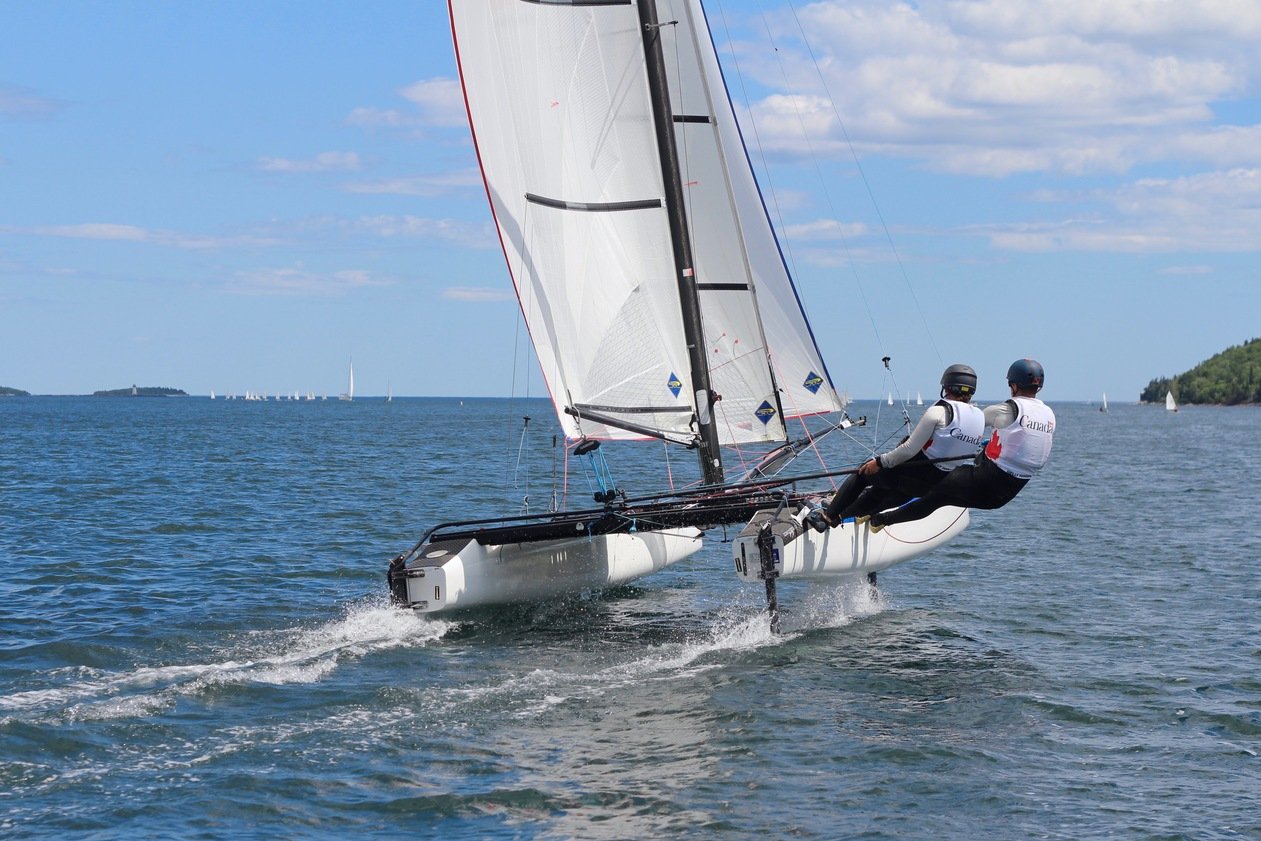
It’s a sunny day at the Royal Nova Scotia Yacht Squadron. There’s a solid breeze and plenty of kids on summer break running around in squeaky shoes. It’s a nice day for sailing.
Off to the side, near the clubhouse’s main entrance, Allie Surrette and Max Flinn are starting to wheel their Nacra 17 — a catamaran-style boat with hydrofoils attached to its two hulls — toward the water for another training session. They’ll be out there for a few hours and bring with them Gatorade and a few granola bars. They’ve already been to the gym this morning and are in the best shape of their lives.
In two weeks, they’ll be in Peru for the Pan American Games, hoping to secure a spot in next summer’s Olympics. It’s a long way from the Nova Scotia waters we’re standing near now, but it’s the next step for Team Surrette Flinn Sailing in accomplishing their biggest dreams, and the teammates are feeling good about their chances.
After all, they’ve spent most of their sporting lives trying to get here.
—
Both sailors attended the same provincial sailing program growing up, and have known each other for years. They’ve been on the world stage for nearly half their lives (Allie sailed in her first North America-wide event at age 11, while Max competed in a World Championship at 13.).
When asked what these experiences were like, both of them blurt out exasperations of “incredible,” and “amazing.” But beyond that, these shared experiences have been great life lessons, which have prepared them well for handling the learning curve that comes with sailing a vessel like the Nacara 17 (which, as a hydrofoil sailboat, will make its Olympic debut in 2020)
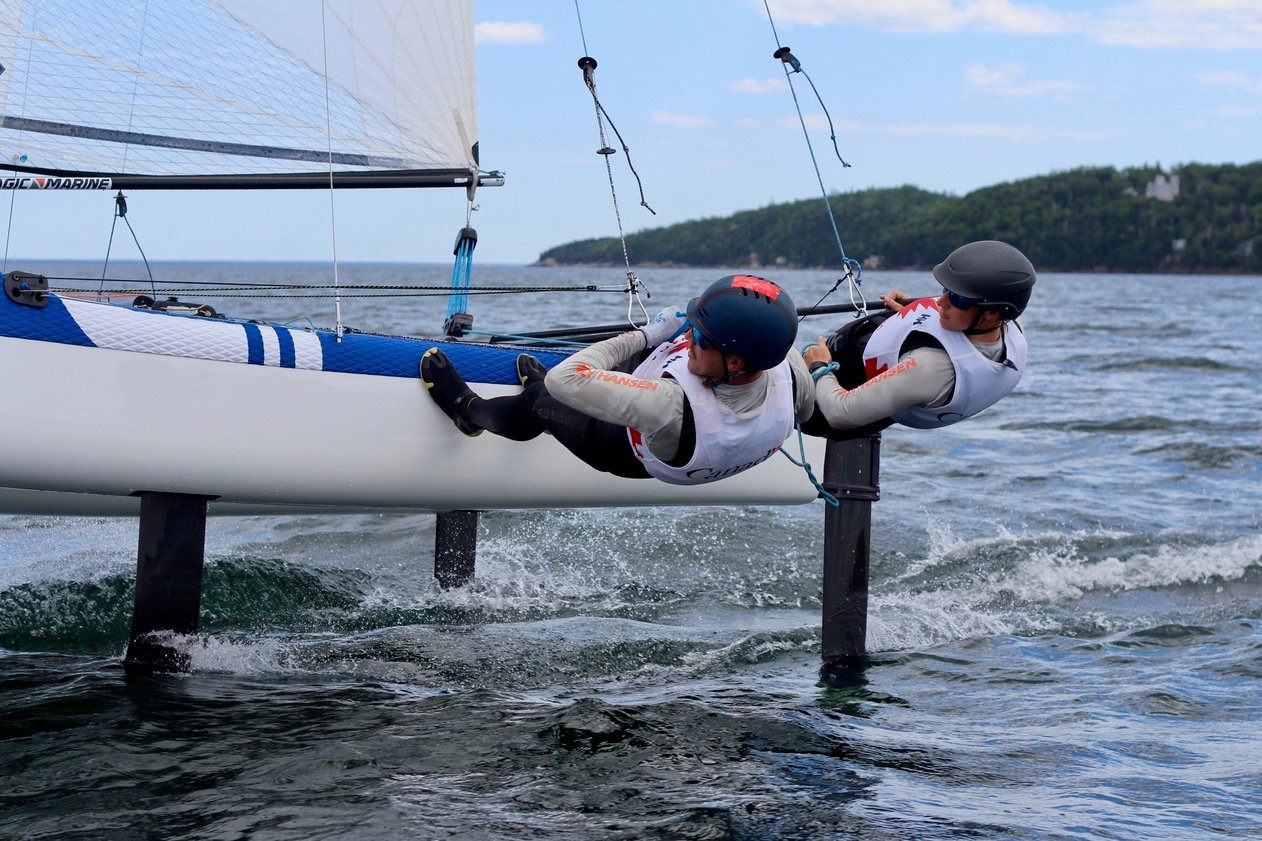
“The coolest thing for us is we’re kind of on the cutting-edge,” Max says, explaining how they’re in control of the only Nacra 17 in Canada. “We’re one of the first ones going out and trying to learn how to foil on these boats and it’s progressing the future of the sport and we’re kind of pioneering that, which is super, super cool.”
However, there’s still lots of work to do — both on and off the water — which means the tandem’s been training almost non-stop since last spring. And as the flight to Peru creeps closer, the tighter the training schedule has grown.
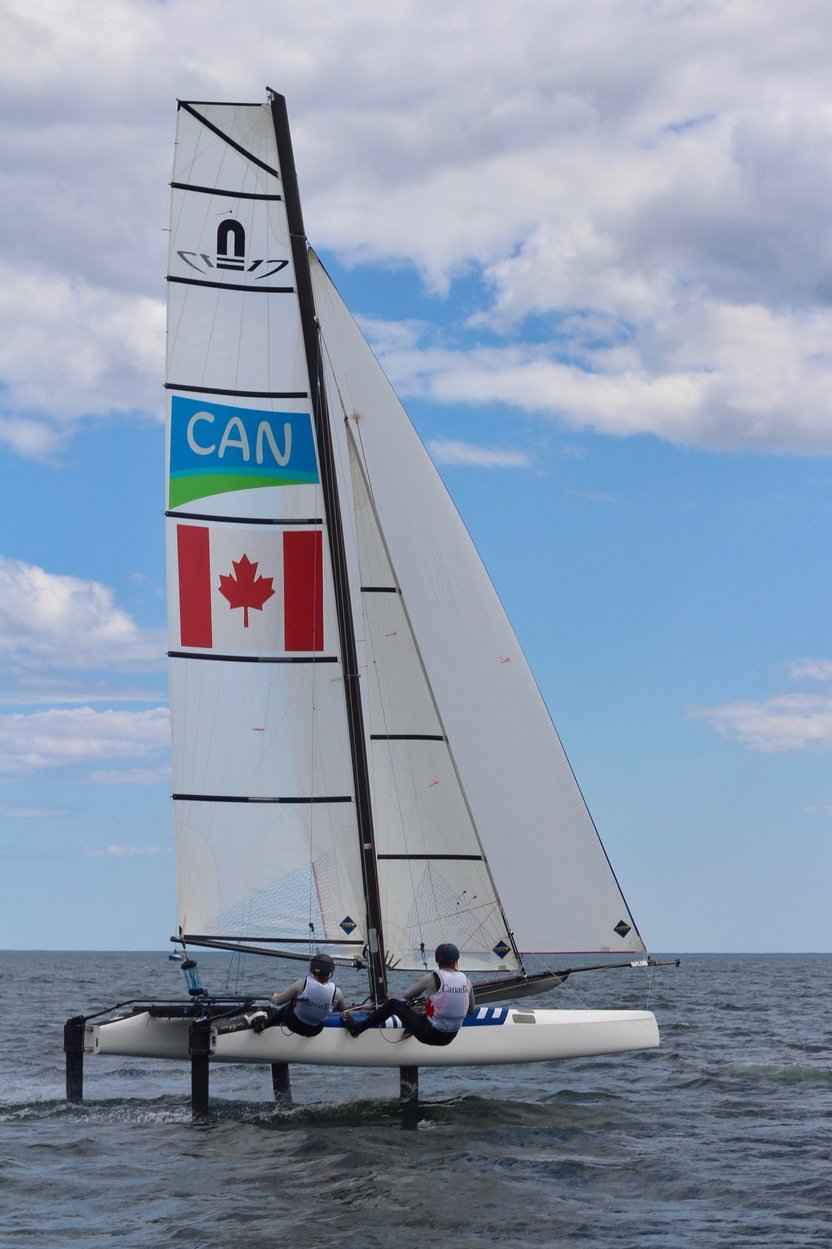
“Right now, we’re in a bit of a push,” says Allie, referring to their current program that has them on the water and in the gym four to five days a week. Whatever time is left over is spent working on cardio and recovery.
It’s a demanding scheduling, which is why having a support system from the Canadian Sport Centre Atlantic (CSCA) has been imperative. Here, coaches are able to monitor their workouts and streamline the data directly into their Kinduct platform, where they can later analyze training loads and other important metrics to help optimize performance.
A technology like Kinduct also offers Surrette and Flinn value due to their unique schedule — when they’re on the road for long periods of time, or in luls between competitions — it’s a way to hold themselves accountable and communicate with their coaches while away from home.
Leading up to their departure, workouts will see some slight tapering before returning for a final surge in hopes of peaking just as the races begin. However, with so much on the line, there’s a mental aspect to their preparation as well.
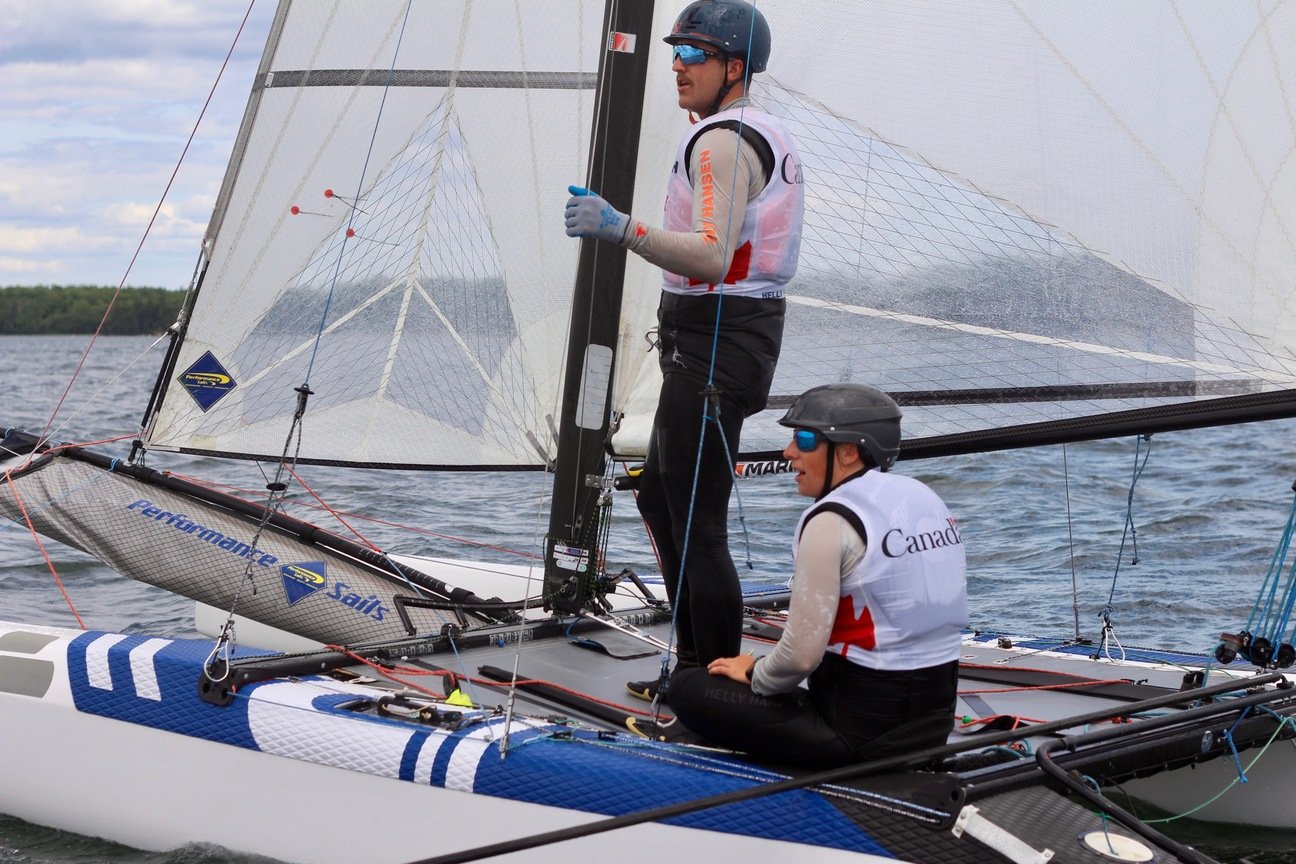
“It’s definitely different,” Max says regarding the magnitude of what’s to come. “There’s a little bit more on the line.”
To help deal with the pressure, Surrette and Flinn visit a sports psychologist. They also use Kinduct’s Wellness Journals, a tool that helps manage the athlete’s daily grind through simple questionnaires regarding overall well-being.
Surrette says, “I like logging my fatigue and stress because it makes me think about why [I’m feeling that way] instead of just trying to forget about it.”
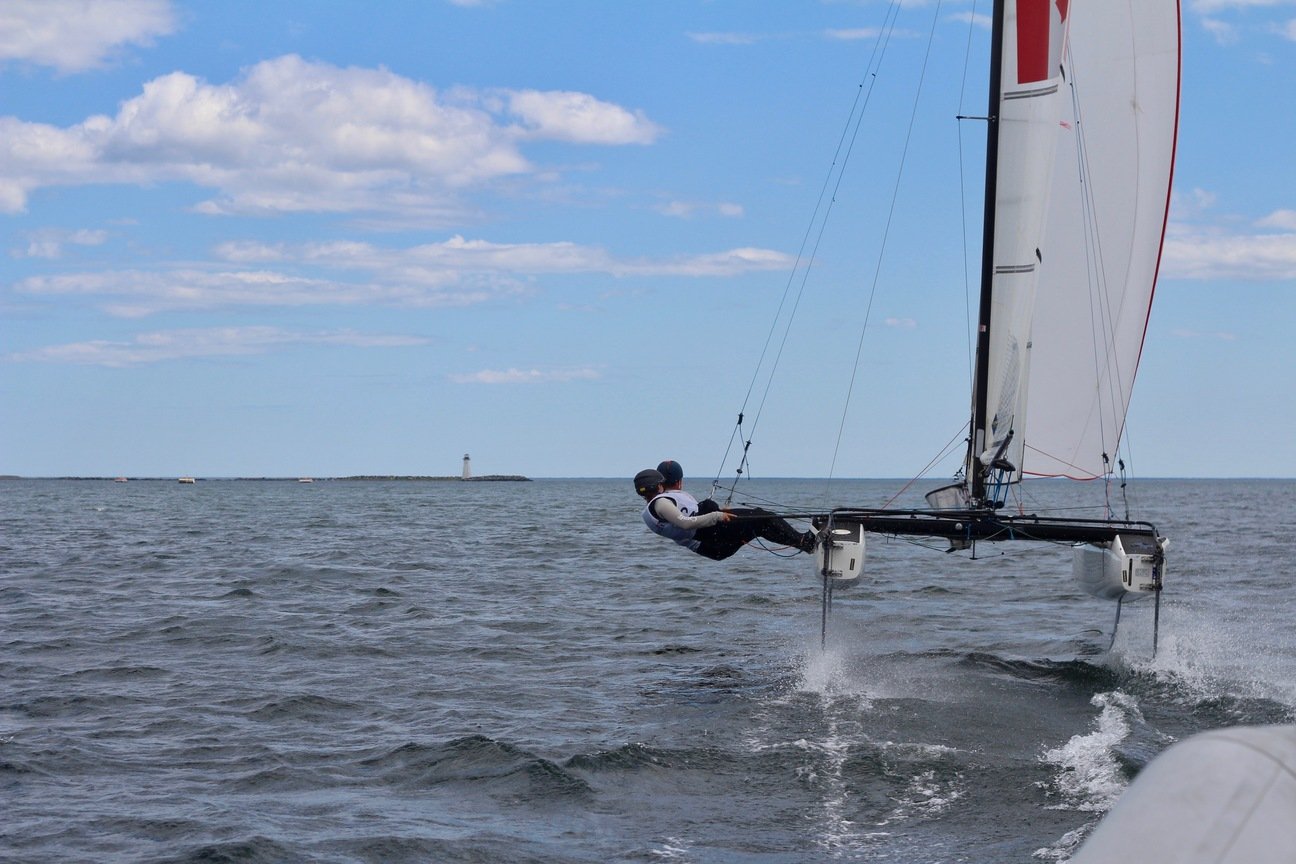
Sometimes, though, they take a break from everything — the training and the tech — and give back to their club in the form of coaching or volunteering. It’s a way of returning the time and patience older athletes once shared with them.
—
Surrette and Flinn have finished rolling their boat over to the water, and now wait their turn to launch amongst the dozen or so dinghy’s which are currently skippered by the squeaky grade-school kids.
Some of the younger sailors see who’s just pulled up and say hi, others are too shy, fully aware of the red maple leaf on the Nacra’s sail.
The moment encapsulates what it means for things to come full circle, and fitting for two Olympic hopefuls who are ready to set off on their biggest adventure yet.
If you’re interested in donating to Team Surrette Flinn Sailing’s Olympic bid, visit their fundraising page here!